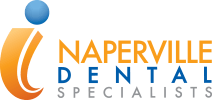Before we discuss the basics of a cleft palate obturator, let’s talk about cleft palates in general. A cleft is an opening in the roof of the mouth, or palate, that can be present at birth.
However, cleft palates can also occur due to trauma, disease or surgery. For example, in some cases, oral cancer treatment entails surgically removing part of the palate.
When the palate is properly formed, it moves into different positions when you speak, helping you enunciate properly without excessive nasal tones. When you eat or drink, the palate also prevents liquid and food from going into your nose when you swallow.
With a cleft palate, these everyday actions are affected, along with the formation and positioning of the teeth. The good news is that a cleft palate obturator can help to restore function.

Treating Cleft Palate
Surgery is often successful in closing the palate but, at times, a cleft palate obturator is necessary to completely cover the opening. An obturator is an oral prosthesis. We make a mold of your mouth and then construct the device out of plastic or metal.
An obturator can also be used if the opening in the palate recurs after surgery or, in certain cases, as an alternative to surgery or as a temporary measure until surgery is appropriate.
An obturator is recommended for infants with a cleft palate because proper feeding is essential for normal development. For adults and children, the prosthesis makes it easier to eat and swallow, so they can get adequate nutrition. It also aids in clear communication and helps reduce the anxiety that speech impairment can cause.
If all or some of the palate was removed as a result of trauma or surgery, at the time of surgery, an obturator may be immediately placed. Ten to 14 days later, the initial prosthesis is typically replaced with a transitional one that can be modified until the site heals.
This transitional phase can last two to 24 months. Once healing is complete, a long-term obturator is then created and positioned over the opening.
What Happens After the Cleft Palate Obturator is Placed?
It can take time to adjust to the prosthesis because it’s placed in the area of the mouth involved in eating, drinking and speaking. However, once you get acclimated to it, you’ll notice a big improvement in your ability to speak and swallow.
To keep the cleft palate obturator clean, simply brush it with mild soap and water when you brush and floss your teeth. In addition to your custom obturator, treatment also entails physical and/or speech therapy, as well as dietary counseling.
As an American board-certified prosthodontist, Dr. LaVacca is experienced in treating conditions of the entire oral cavity, beyond just your teeth. He can provide you with a cleft palate obturator to help you speak, eat, smile and laugh with confidence and comfort.
Book an appointment at Naperville Dental Specialists today to learn more. Request a visit online or by calling us at (630) 848-2010.

